
Paleoceanography and Paleoclimatology
Scope & Guideline
Illuminating the Past to Understand Our Future
Introduction
Aims and Scopes
- Paleoenvironmental Reconstructions:
The journal emphasizes the reconstruction of past environments using various proxies, including isotopes, sediment analysis, and fossil records to understand historical climate and oceanographic conditions. - Integration of Multidisciplinary Approaches:
Studies often incorporate methods from geology, biology, chemistry, and climate modeling, promoting a holistic understanding of the interactions between ocean and climate systems over geological timescales. - Focus on Climate Change Dynamics:
Research published in the journal frequently addresses the dynamics of past climate changes, particularly their causes and effects, providing insights into natural climate variability and anthropogenic impacts. - Application of Advanced Technologies:
The use of cutting-edge technologies such as machine learning, high-resolution geochemical analyses, and advanced statistical methods is a consistent theme, enhancing the accuracy and depth of paleoclimatic reconstructions. - Global and Regional Climate Insights:
The journal covers studies that provide insights into both global climate patterns and regional climate phenomena, thus bridging the gap between localized studies and global climate trends.
Trending and Emerging
- Machine Learning Applications:
Recent publications reflect a surge in the application of machine learning techniques for analyzing complex datasets, enhancing the ability to reconstruct past climates and predict future trends. - Interdisciplinary Studies Linking Climate and Ecosystems:
There is a growing trend toward studies that link paleoclimate data with ecological impacts, examining how historical climate changes have affected marine and terrestrial ecosystems. - Focus on Anthropogenic Influences:
An increasing number of papers are addressing the impacts of human activities on historical climate patterns, providing insights into how current changes may be influenced by past anthropogenic effects. - High-Resolution Proxy Data:
Emerging studies utilize high-resolution proxy data to gain finer temporal insights into climate variability, allowing for more detailed reconstructions that can inform current climate models. - Climate Feedback Mechanisms:
There is a rising interest in understanding feedback mechanisms within the climate system, particularly how past climate events can inform our understanding of current climate dynamics.
Declining or Waning
- Traditional Geological Methods:
There is a noticeable decline in the use of purely traditional geological methods without integration of modern techniques, as the field increasingly favors interdisciplinary approaches that combine various scientific disciplines. - Focus on Short-Term Climate Events:
Research centered on very short-term climate events or localized phenomena is becoming less prevalent compared to studies that address long-term trends and broader climatic shifts. - Paleoceanographic Studies Lacking Climate Context:
Papers that focus solely on paleoceanographic aspects without tying them to broader climate implications or models are less frequently published, indicating a shift towards more integrative studies that consider climate implications. - Single Proxy Studies:
There is a reduction in the publication of studies relying on single proxies for paleoclimate reconstruction, as the trend shifts towards multi-proxy approaches that provide a more comprehensive view of past environments. - Overly Specialized Research Topics:
Highly specialized topics that do not connect to broader climate or oceanographic narratives are less common, as researchers increasingly aim for studies that contribute to wider scientific discussions.
Similar Journals

DOKLADY EARTH SCIENCES
Innovating Research in Earth Sciences Since 1998DOKLADY EARTH SCIENCES is a reputable journal published by MAIK NAUKA/INTERPERIODICA/SPRINGER, focusing on the dynamic field of Earth and Planetary Sciences. With an ISSN of 1028-334X and E-ISSN 1531-8354, this journal offers a platform for researchers to disseminate their findings and insights that contribute to our understanding of Earth systems over a continuous publishing span from 1998 to 2024. It currently holds a Q3 quartile ranking in the Earth and Planetary Sciences category, reflecting an emerging yet significant impact within its field, evidenced by its Scopus ranks where it stands at 123rd in general Earth sciences and 113th in miscellaneous Earth sciences. DOKLADY EARTH SCIENCES aims to bridge research gaps and foster collaboration among a diverse audience including researchers, professionals, and students committed to advancing knowledge in geoscience. The journal stands as a vital resource for those seeking to explore contemporary challenges and innovations within the realm of Earth sciences.
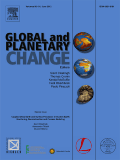
GLOBAL AND PLANETARY CHANGE
Leading the Conversation on Climate and Environmental ScienceGLOBAL AND PLANETARY CHANGE, published by Elsevier, is a premier international journal focused on the critical issues surrounding environmental science, climate change, and planetary dynamics. Since its inception in 1989, this journal has established itself as a leading voice in the field, currently holding a prestigious Q1 ranking in both Global and Planetary Change and Oceanography as of 2023. With a remarkable influence reflected in its Scopus rankings—15th in Earth and Planetary Sciences and 34th in Global and Planetary Change—it serves as an essential platform for researchers, professionals, and students. The journal provides a comprehensive examination of cutting-edge research findings and innovative developments that address the urgent challenges facing our planet. Although it is not an Open Access journal, it remains a vital resource for anyone keen to contribute to or stay informed on the ever-evolving discourse of global environmental change, promoting sustainable solutions for the future.
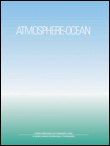
ATMOSPHERE-OCEAN
Navigating the Complexities of Climate ChangeATMOSPHERE-OCEAN is a premier peer-reviewed journal published by Taylor & Francis Ltd, dedicated to advancing the fields of atmospheric science and oceanography. Since its inception in 1963, this journal has served as a crucial platform for researchers, professionals, and students, facilitating the dissemination of significant findings and innovative methodologies in understanding the complex interactions between the atmosphere and the ocean. With its journal ranking in the Q3 category for Atmospheric Science and Q2 for Oceanography as of 2023, along with its Scopus rankings, ATMOSPHERE-OCEAN maintains its relevance by addressing current topics such as climate change, hydrology, and ocean circulation patterns. For those seeking to contribute to or stay informed about the latest research in these critical fields, ATMOSPHERE-OCEAN is an invaluable resource that combines rigorous scholarship with practical implications for environmental management and policy.
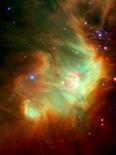
Annual Review of Earth and Planetary Sciences
Pioneering Research in Earth and Celestial StudiesAnnual Review of Earth and Planetary Sciences is a leading scholarly journal published by Annual Reviews, dedicated to advancing our understanding of the dynamic processes governing the Earth and its celestial companions. With ISSN 0084-6597 and E-ISSN 1545-4495, this esteemed journal, established in 1976, has consistently provided comprehensive reviews that synthesize cutting-edge research across various disciplines, including astronomy, astrobiology, geology, and planetary science. Notably, the journal has achieved a remarkable position in the academic landscape, ranking in the Q1 quartile across multiple categories, including Astronomy and Astrophysics and Earth and Planetary Sciences, with Scopus rankings placing it at the forefront of these fields. The journal's commitment to facilitating open access to critical scientific advances, though not fully open, allows for maximum reach within the research community. Researchers, professionals, and students alike can benefit from the high-impact articles designed to foster collaboration and innovation within the fields of earth and planetary science.

Frontiers of Earth Science
Connecting Researchers to the Frontiers of DiscoveryFrontiers of Earth Science is a prominent academic journal in the field of Earth and Planetary Sciences, published by Springer. With an ISSN of 2095-0195 and an E-ISSN of 2095-0209, this journal serves as a significant platform for researchers and professionals to disseminate their findings from 2007 to 2024. It is recognized for its impactful contributions within the category of Earth and Planetary Sciences, boasting a respected Q2 ranking in 2023. With a Scopus ranking of 64 out of 195, placing it in the 67th percentile, Frontiers of Earth Science continues to drive academic dialogue and innovation. The journal is dedicated to exploring a diverse range of topics, including geology, meteorology, and environmental science, and amplifying the understanding of Earth systems through rigorous research. Located in New York, USA, this journal embraces an Open Access model, ensuring that groundbreaking research is readily available to the global scientific community, thereby enhancing its accessibility and impact.
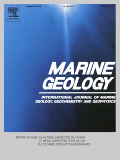
MARINE GEOLOGY
Navigating the Intersection of Geology and Oceanography.MARINE GEOLOGY, published by Elsevier, is a premier journal dedicated to advancing the understanding of marine geological processes and their interactions with the Earth's systems. With an ISSN of 0025-3227 and an E-ISSN of 1872-6151, this esteemed journal has been a vital resource for researchers and professionals since its inception in 1964. The journal is recognized for its high impact, with commendable rankings, including Q1 in both Geology and Oceanography, and Q2 in Geochemistry and Petrology according to its 2023 category quartiles. With a Scopus rank within the top percentiles in various fields, MARINE GEOLOGY offers a platform for original research, critical reviews, and significant advancements in the field, covering topics ranging from sedimentology to geochemical processes in marine environments. Although it does not operate under an open-access model, its rigorous peer-review process ensures high-quality publications that contribute to our understanding of oceanic and geological sciences. Researchers, students, and professionals alike will find MARINE GEOLOGY to be an essential resource for collaboration and discovery within the vast field of marine science.

Geologos
Exploring Earth and Beyond: Where Knowledge Meets DiscoveryGeologos is a peer-reviewed journal dedicated to advancing knowledge in the field of Earth and Planetary Sciences. Published by SCIENDO, this Open Access journal has been facilitating unrestricted access to research findings since 2009, ensuring that scholars, professionals, and students can engage with up-to-date scientific discourse without barriers. With an ISSN of 1426-8981 and an E-ISSN of 2080-6574, Geologos is indexed in Scopus, where it currently holds a rank of #111 out of 195 in the General Earth and Planetary Sciences category, reflecting its commendable impact within the discipline. Based in Poland, the journal embraces contributions from international authors, promoting a diverse and inclusive dialogue on topics ranging from geological phenomena to planetary processes. As a Q3 journal in the Earth and Planetary Sciences category, Geologos is committed to enhancing the understanding and appreciation of the Earth's systems, making it an essential resource for those engaged in research and practice within this dynamic field.
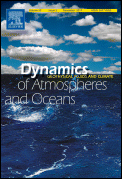
DYNAMICS OF ATMOSPHERES AND OCEANS
Charting New Frontiers in Environmental ResearchDYNAMICS OF ATMOSPHERES AND OCEANS, published by Elsevier, is a renowned journal that has established itself as a vital resource in the fields of atmospheric science, oceanography, and geology. With a rich publication history stretching from 1976 to 2024, this journal provides a platform for high-quality research that addresses the complex interactions between the atmosphere and oceans, which are critical to understanding climate change and environmental systems. It enjoys a respectable impact factor and a reputable position within its category quartiles, specifically noted as Q2 in critical domains such as Computers in Earth Sciences and Oceanography. Researchers and professionals benefit from its indexed coverage, featuring a Scopus ranking that places it among the leading journals in its categories. Although it is not an open-access journal, readers can access its cutting-edge articles through institutional subscriptions or individual purchases. The journal aims to foster cross-disciplinary dialogue and innovation by publishing original research, reviews, and insightful commentary, making it a cornerstone for scholars, students, and practitioners committed to advancing knowledge in the dynamic interplay of Earth's atmospheric and oceanic systems.

JOURNAL OF PHYSICAL OCEANOGRAPHY
Connecting Research and Innovation in Ocean ScienceJOURNAL OF PHYSICAL OCEANOGRAPHY, published by the American Meteorological Society, stands at the forefront of the oceanographic research domain, with a distinguished history dating back to 1969. As a crucial resource for researchers, professionals, and students, this journal focuses on the physical aspects of our oceans, facilitating the dissemination of innovative studies that enhance our understanding of ocean dynamics, climate interactions, and marine ecosystems. With an impressive impact factor and a Q1 ranking in Oceanography, it ranks 30th out of 145 journals in the Earth and Planetary Sciences category (Scopus), placing it in the 79th percentile of its field. Its commitment to high-quality, peer-reviewed content ensures that the latest advances in oceanographic science are accessible to a global audience. Although the journal does not currently offer open access options, it remains a vital platform for cutting-edge research that shapes the future of oceanographic science and its applications.
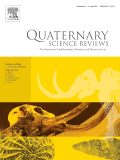
Quaternary Science Reviews
Illuminating Earth's Past for a Sustainable FutureQuaternary Science Reviews is a premier international journal published by PERGAMON-ELSEVIER SCIENCE LTD, dedicated to the multidisciplinary study of the Quaternary period and its implications across a variety of scientific fields, including archaeology, geology, ecology, and environmental science. With an impressive impact factor that places it in the Q1 quartile across multiple categories such as Archaeology, Ecology, and Geology, it stands as a beacon of scholarly excellence. The journal, which has been in circulation since 1982 and converges its knowledge through to 2024, is instrumental for researchers and professionals seeking to explore the complexities of climate change, biodiversity, and earth systems. Though it does not currently offer Open Access options, its well-curated content remains vital for academic advancement and is accessible to a broad audience through institutional subscriptions. Positioned at the forefront of modern scientific inquiry, the journal fosters an environment for sharing pivotal findings and fostering intellectual discussions, making it an indispensable resource for students, practitioners, and researchers alike.